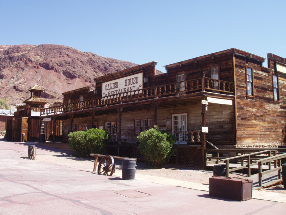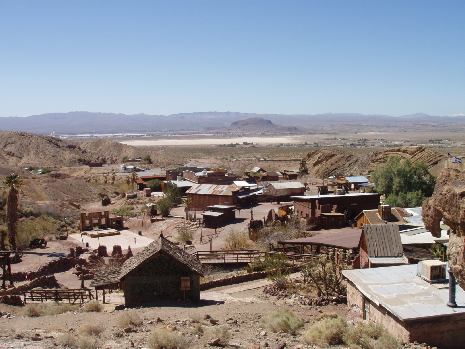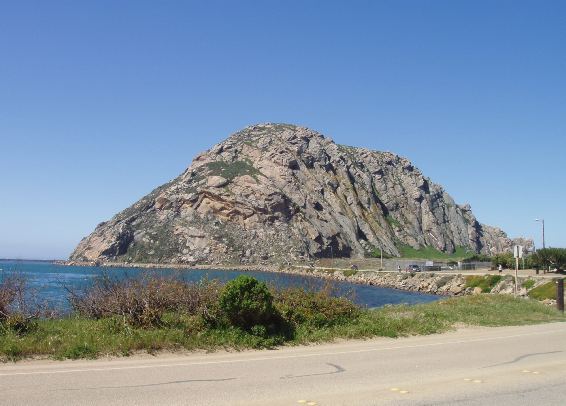

On the freeway from Las Vegas to Barstow, just a few minutes short of Barstow, is the fascinating old ghost town of CALICO. Nearly 117 years ago this town of CALICO was bustling with prospectors searching for its mineral riches. Silver was king here and the Calico Mining district became one of the richest in the state. Established in March 1881, CALICO could boast boomtown status, producing $86 million in silver, $45 million on borax, and a town population of 1,200 with 22 saloons, China Town and a red light district. Over 500 mines, including the legendary Silver King, Oriental and Bismarck were the engines that drove CALICO’s great wealth between the years of 1881 and 1907. Like most towns of the early West, when the price of silver dropped from $1.31 an ounce to $0.63, CALICO became a ghost town of its former self.
Today CALICO is one of the few remaining original mining towns of the western United States, since thanks to some far- sighted individuals in 1966, the town was restored somewhat to its present condition. About one third of the buildings are original, with the remainder being constructed in a similar way to the originals. The school, schoolhouse, church, stores, saloons all provide a most informative and interesting visit.
Today CALICO is one of the few remaining original mining towns of the western United States, since thanks to some far-



Main Street Calico (above) and a general view of the town (below)

From Calico we again traversed the Mojave High Desert and when we reached Bakersfield, decided to head for the Pacific Coast. The route was over tortuous country routes, with many steep roads with precipitous drops on either side, but it was worth the effort when we arrived at the very attractive beach resort of Morro which is situated on route one from Los Angeles to San Francisco and about 50 or 60 miles North of Los Angeles. We found a good Motel and were able to enjoy the attractions of the area which included a long sandy beach and other sheltered areas by the sea in the shelter of the rock shown below. There were good restaurants with excellent sea food and from one restaurant, situated on stilts adjoining an inlet from the sea, we observed many crafts going too and fro and, to our delight and surprise, a SEA OTTER swam past as we were having breakfast.


Morro Point and “the Mound” with one of the sheltered beaches (below)
But again, all too soon, we had to be on the move again and head back towards San Francisco. We intended to travel the whole of route one via the Pacific Coast, but on making enquiries at the local travel and tourist office, the assistant after ‘phoning the police on our behalf indicated that many areas of route one were affected by land slides and we were advised to take the route for the first ten miles and then transfer over to route 101 Interstate before completing the journey to Monterey and the Monterey Peninsula. This we accomplished but when we got to Monterey, we traversed back down route one for about 30 miles which were clear of land slides and you will see on the following page the beauty of that coastline. If, in the future it is fully open, do not miss that experience.





